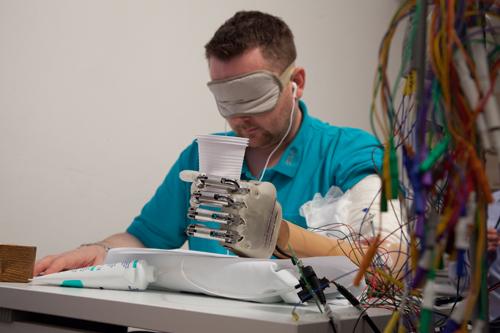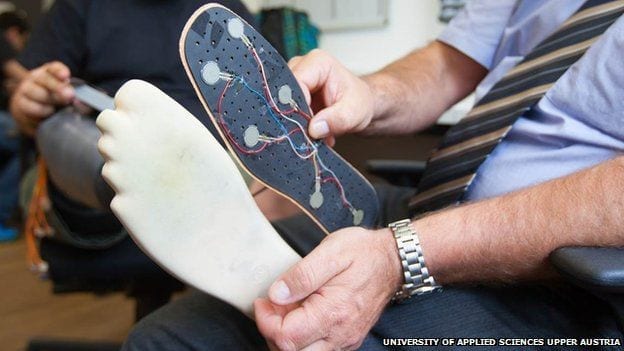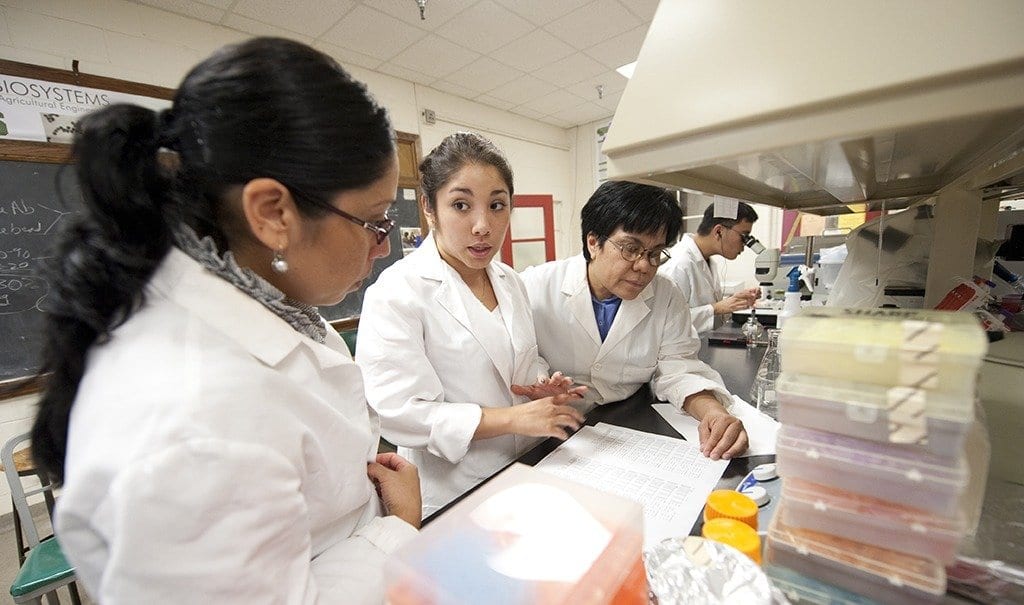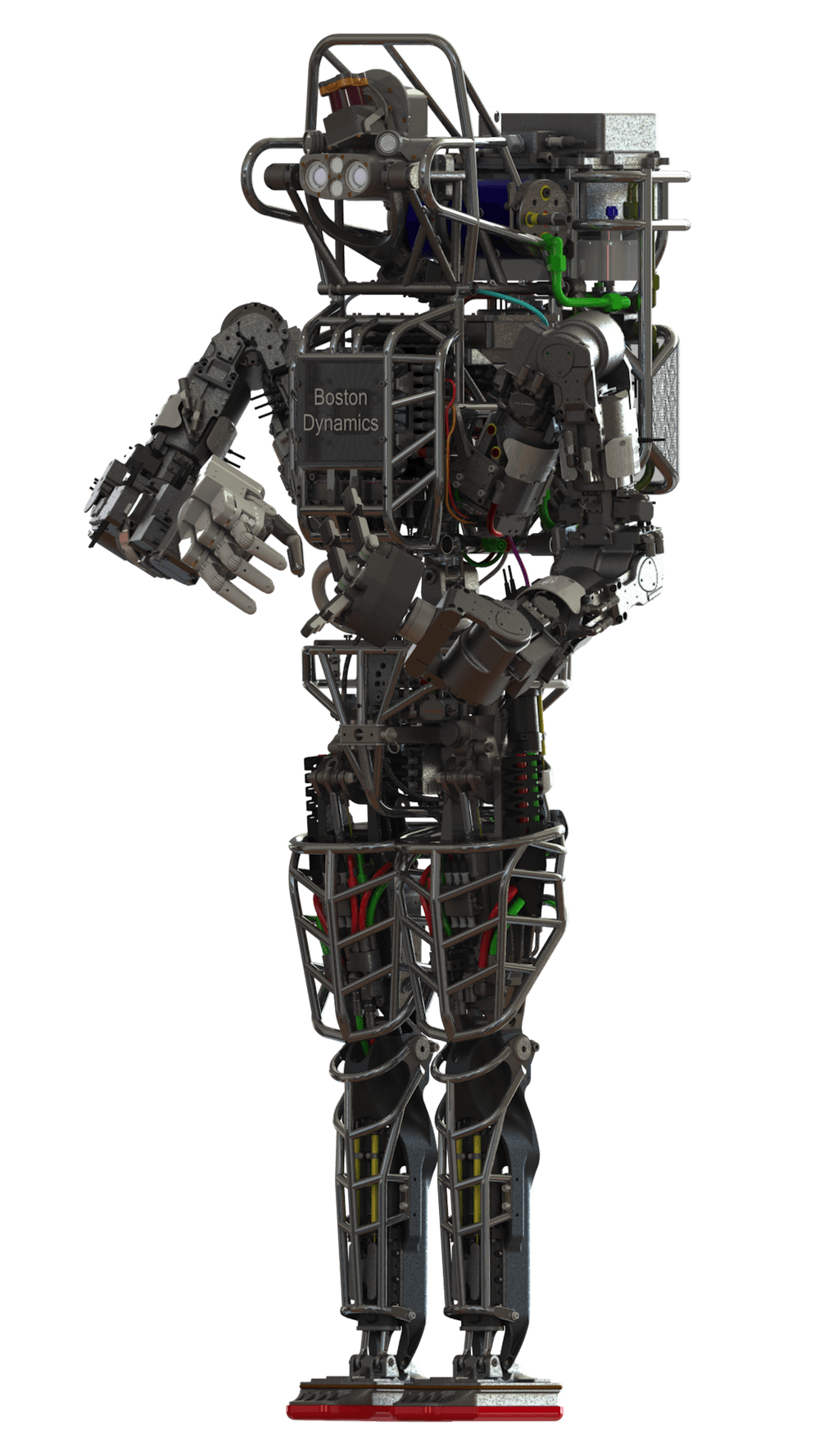
“The sensory feedback was incredible,” reports the 36 year-old amputee from Denmark.
Nine years after an accident caused the loss of his left hand, Dennis Aabo Sørensen from Denmark became the first amputee in the world to feel – in real-time – with a sensory-enhanced prosthetic hand that was surgically wired to nerves in his upper arm. Silvestro Micera and his team at EPFL Center for Neuroprosthetics and SSSA (Italy) developed the revolutionary sensory feedback that allowed Sørensen to feel again while handling objects. A prototype of this bionic technology was tested in February 2013 during a clinical trial in Rome under the supervision of Paolo Maria Rossini at Gemelli Hospital (Italy). The study is published in the February 5, 2014 edition of Science Translational Medicine, and represents a collaboration called Lifehand 2 between several European universities and hospitals.
“The sensory feedback was incredible,” reports the 36 year-old amputee from Denmark. “I could feel things that I hadn’t been able to feel in over nine years.” In a laboratory setting wearing a blindfold and earplugs, Sørensen was able to detect how strongly he was grasping, as well as the shape and consistency of different objects he picked up with his prosthetic. “When I held an object, I could feel if it was soft or hard, round or square.”
From Electrical Signal to Nerve Impulse
Micera and his team enhanced the artificial hand with sensors that detect information about touch. This was done by measuring the tension in artificial tendons that control finger movement and turning this measurement into an electrical current. But this electrical signal is too coarse to be understood by the nervous system. Using computer algorithms, the scientists transformed the electrical signal into an impulse that sensory nerves can interpret. The sense of touch was achieved by sending the digitally refined signal through wires into four electrodes that were surgically implanted into what remains of Sørensen’s upper arm nerves.
“This is the first time in neuroprosthetics that sensory feedback has been restored and used by an amputee in real-time to control an artificial limb,” says Micera.
“We were worried about reduced sensitivity in Dennis’ nerves since they hadn’t been used in over nine years,” says Stanisa Raspopovic, first author and scientist at EPFL and SSSA. These concerns faded away as the scientists successfully reactivated Sørensen’s sense of touch.
Connecting Electrodes to Nerves
On January 26, 2013, Sørensen underwent surgery in Rome at Gemelli Hospital. A specialized group of surgeons and neurologists, led by Paolo Maria Rossini, implanted so-called transneural electrodes into the ulnar and median nerves of Sørensen’s left arm. After 19 days of preliminary tests, Micera and his team connected their prosthetic to the electrodes – and to Sørensen – every day for an entire week.
The ultra-thin, ultra-precise electrodes, developed by Thomas Stieglitz’s research group at Freiburg University (Germany), made it possible to relay extremely weak electrical signals directly into the nervous system. A tremendous amount of preliminary research was done to ensure that the electrodes would continue to work even after the formation of post-surgery scar tissue. It is also the first time that such electrodes have been transversally implanted into the peripheral nervous system of an amputee.
The First Sensory-Enhanced Artificial Limb
The clinical study provides the first step towards a bionic hand, although a sensory-enhanced prosthetic is years away from being commercially available and the bionic hand of science fiction movies is even further away.
The next step involves miniaturizing the sensory feedback electronics for a portable prosthetic. In addition, the scientists will fine-tune the sensory technology for better touch resolution and increased awareness about the angular movement of fingers.
The electrodes were removed from Sørensen’s arm after one month due to safety restrictions imposed on clinical trials, although the scientists are optimistic that they could remain implanted and functional without damage to the nervous system for many years.
The Latest on: Sensory-Enhanced Artificial Limb
[google_news title=”” keyword=”Sensory-Enhanced Artificial Limb” num_posts=”10″ blurb_length=”0″ show_thumb=”left”]
via Google News
The Latest on: Sensory-Enhanced Artificial Limb
- AI-enhanced four-legged Robot LocoMan that mimics human beingson April 18, 2024 at 5:00 pm
The joint research of Carnegie Mellon University, University of Washington, and Google DeepMind has paved the way for a breakthrough artificial ... of the limbs, which may not be seen in other ...
via Bing News











